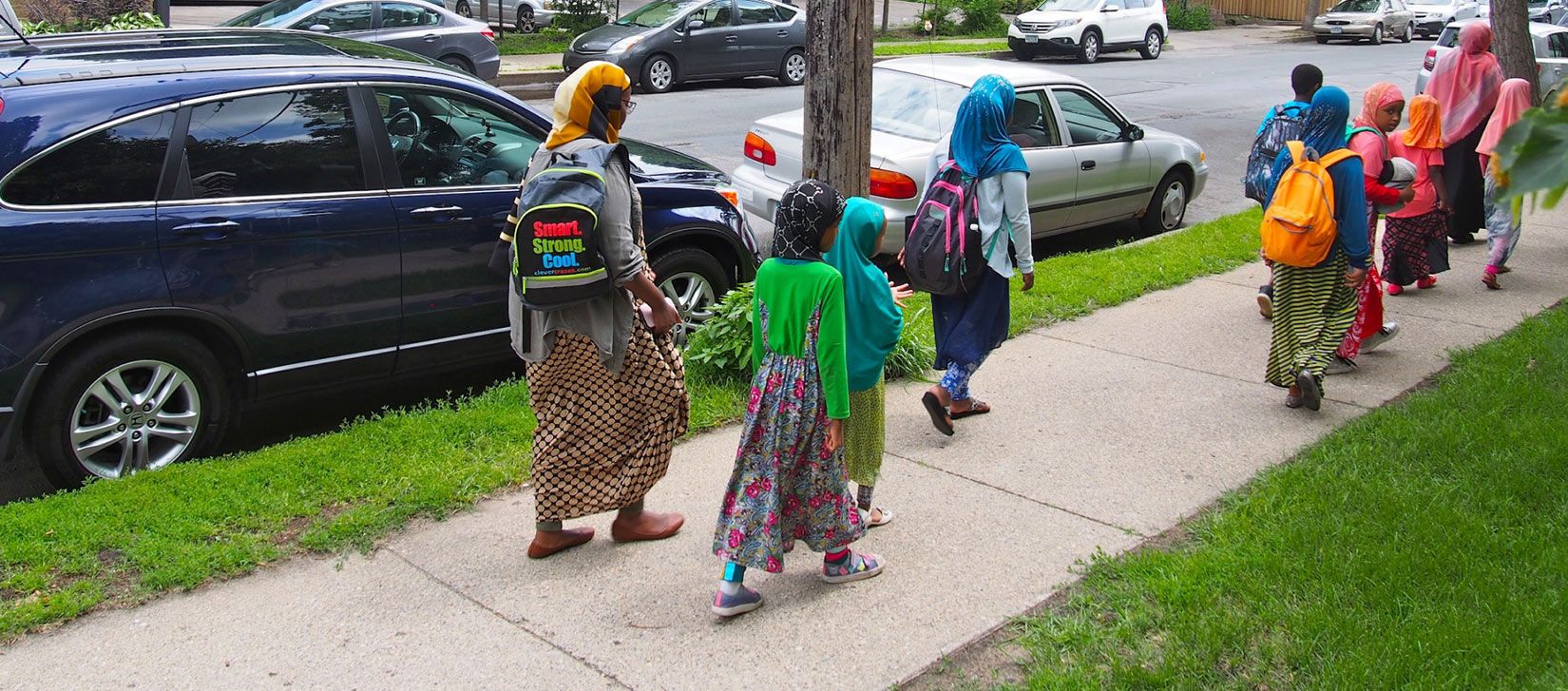Why do we prioritize equity?
Equity translates to fair and just opportunities and outcomes for all people. The City is committed to the development of policies, practices and strategic investments to reverse racial disparity trends, eliminate institutional racism, and ensure that outcomes and opportunities for all people are no longer predictable by race.1 Transportation is a critical part of this work.
Not all people have the same access to transportation. More than one of every six people in Minneapolis (16.5%) live in a household without an automobile.2 In some neighborhoods as many as 40-50% of households don't have access to a vehicle. Over three in ten people of color households do not have access to a car.3 While some households choose not to own a car, there are many households that cannot afford to do so. Transportation is one of the top two household costs, accounting for approximately 19% of household income in Minneapolis.4
One of the goals of this plan is to reduce single occupancy and high-carbon motor vehicle trips, but the current transportation network affords more opportunities to those who can purchase a car, such as access to more jobs. To design, build and operate an equitable transportation system, it is imperative that we focus on underserved communities that are in need of expanded, improved and affordable mobility options. As it currently stands, people of color spend two minutes more on their commutes than white residents5; this adds up to over 17 hours more per year spent commuting.
Additionally, 11% of Minneapolis residents self-report a disability, which may present mobility challenges.6 Given these realities, the existing transportation system results in different challenges for different people. The approach to our work recognizes these realities and will help address them.
Households without access to a car
1 City of Minneapolis (2017)
2 Household Size by Vehicles Available, U.S. Census Bureau, 2014-2018 American Community Survey 5-Year Estimates
3 National Equity Analysis
4 Source: 2013 American Housing Survey; American Community Survey 2009-2013 (5 year estimates)
5 National Equity Analysis
6 Disability Characteristics, U.S. Census Bureau, 2013-2017 American Community Survey 5-Year Estimate
To design, build and operate an equitable transportation system, it is imperative that we focus on underserved communities that are in need of expanded, improved and affordable mobility options.

 EQUITY
EQUITY